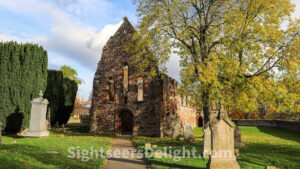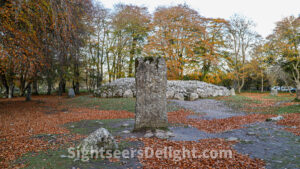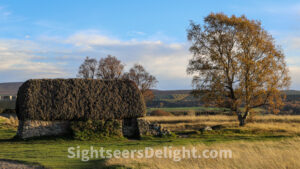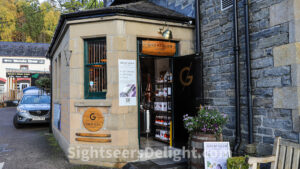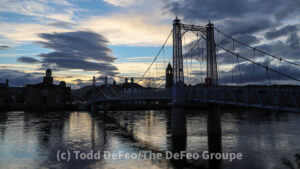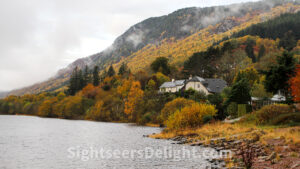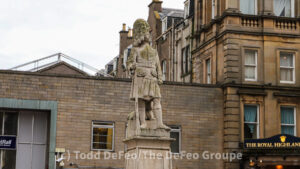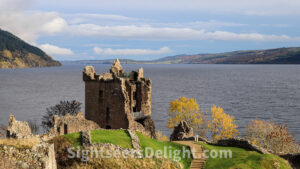Beauly Priory, in the Beauly village of the Highland area, was a Valliscaulian monastic community that was probably founded in 1230. The monastery’s founder is unknown for certain, as different sources give different names, such as Alexander II of Scotland, John Byset, or both. The French monks and Bisset, a nearby landowner, had a strong French-speaking presence, hence the name of the location and the river: “beau lieu” (“beautiful place”), which later passed into English. The priory’s ruins, protected as a scheduled monument, are one of the top attractions in Inverness.
Clava Cairns near Inverness is a well-preserved Bronze Age cemetery complex consisting of passage graves, ring cairns, kerb cairns, and standing stones. It is a significant and exceptional prehistoric site that dates back about 4,000 years. The cemetery was used in two periods, with the first row of large cairns built around 2000 BC. It was reused a thousand years later, with burials placed in some existing cairns. Excavations have found evidence of previous farming on the site. The cairns replaced the settlement, and some materials used to build them may have been taken from demolished houses.
The Greig Street Bridge is a suspension bridge across the River Ness in Inverness and is open only to pedestrians. Dating 1880-81 and built by the civil engineer C. Manners in conjunction with the Rose Street Foundry for a cost of £1,400, it is composed of two side spans of 67 feet and a central span of 201 feet. Its cables were replaced in 1952, and the anchorages were replaced in 1989.
Urquhart Castle, located on a headland overlooking Loch Ness 13 miles southwest of Inverness, is home to ruins that date back to the 13th to the 16th centuries. It was built on an early medieval fortification site and was critical in the Wars of Scottish Independence during the 14th century. Throughout history, it was raided on several occasions by the MacDonald Earls of Ross and was subsequently granted to the Clan Grant in 1509. Despite additional raids, the castle was strengthened, only to be mostly abandoned by the middle of the 17th century. In the 20th century, it became a scheduled monument placed in state care and opened to the public. Today, Urquhart Castle is one of the largest castles in Scotland and one of the country’s most-visited historical sites.

